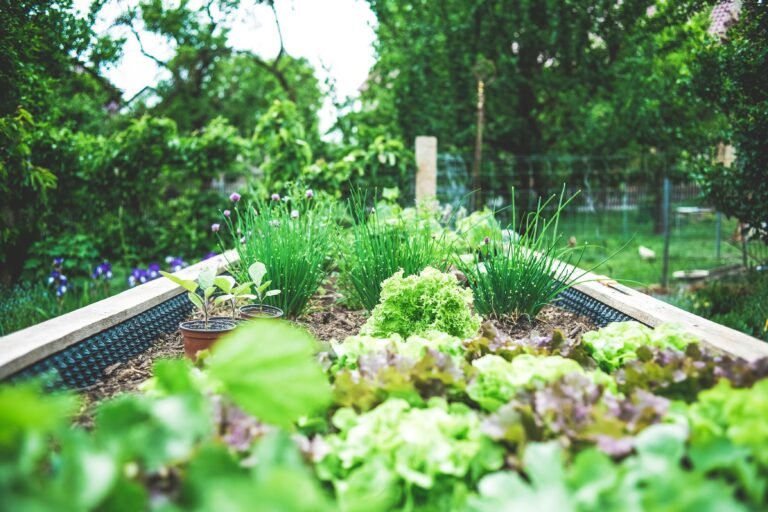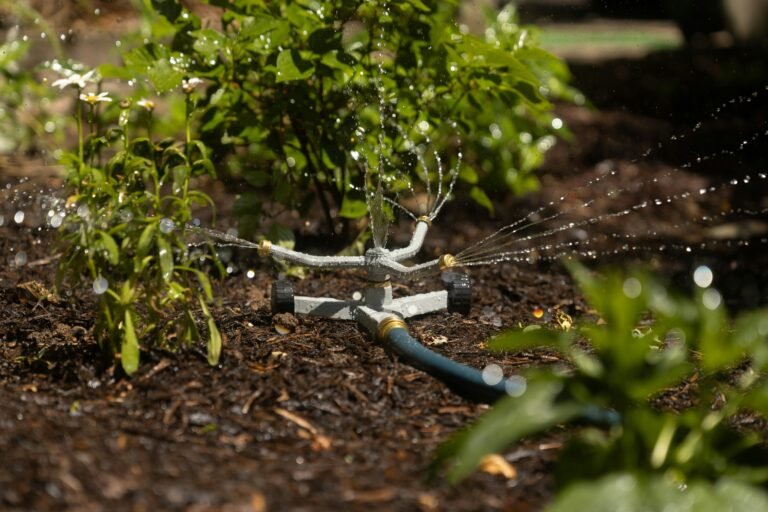Discover how backyard composting can help you turn waste into a garden treasure while saving money and the planet.
Today, sustainability matters more than ever. Experts at the U.S. Environmental Protection Agency say composting recycles waste naturally, and Oregon State University confirms its benefits for garden soil. You do not need any fancy tools to start.
This guide will show you easy steps for backyard composting. We explain how to set up your bin, choose the right materials, and keep your pile healthy. Whether you have a big yard or a small balcony, you can turn kitchen scraps into rich soil. Let us help you create nutrient-rich “black gold” for your plants.
Join us as we explore the simple art of composting!
Understanding the Basics of Composting
Let us cover the basic ideas of composting before you start.
What is Composting?
Composting is nature’s process of breaking down organic matter into a dark, crumbly soil called humus. Tiny organisms, insects, and microbes work together to recycle your waste.
The Benefits of Composting
- Waste Reduction: It sends less waste to landfills.
- Soil Enrichment: It makes garden soil rich in nutrients.
- Water Conservation: It helps retain water in the soil.
- Eco-Friendly: It diminishes the need for chemical fertilizers.
- Cost-Effective: It gives you free, high-quality soil amendment.
The Composting Process
Composting uses four key elements:
- Green Materials (Nitrogen-rich): Fresh grass clippings, kitchen scraps, and coffee grounds.
- Brown Materials (Carbon-rich): Dry leaves, straw, paper, and wood chips.
- Water: It keeps the pile moist for microbes.
- Air: It helps the process and stops odors.
Pro tip: Use about 3 parts brown to 1 part green materials by volume. This mix gives decomposers a perfect environment.
Setting Up Your Compost Bin
Let us now build a simple compost bin in your backyard.
Choosing a Location
- Convenient Access: Pick a spot where you can add waste easily.
- Good Drainage: Choose an area that does not hold excess water.
- Partial Shade: A little shade keeps the pile from drying.
- Away from Structures: Keep it a few feet from wooden buildings to avoid rot.
DIY Compost Bin Options
- Wire Mesh Bin:
- Materials: Wire mesh, zip ties or wire, and wooden stakes.
- Steps:
- Form a cylinder with the wire mesh about 3 to 4 feet wide.
- Secure the edges with zip ties or wire.
- Place wooden stakes around the cylinder for extra support.
- Wooden Pallet Bin:
- Materials: Four wooden pallets, screws, and hinges.
- Steps:
- Stand three pallets upright to form a U-shape.
- Fasten the corners with screws or brackets.
- Attach the fourth pallet as a door using hinges.
- Repurposed Container:
- Use an old garbage can or a plastic storage container.
- Drill holes in the sides and bottom for air and drainage.
No-Bin Composting
If you have more space, try a compost pile without a container:
- Clear a 3-foot by 3-foot patch of ground.
- Layer green and brown materials directly on the ground.
- Cover with a tarp to retain moisture and heat if needed.
What to Compost: Green and Brown Materials
Know what to add and what to avoid for a good compost pile.
Green Materials (Nitrogen-Rich)
- Fruit and vegetable scraps
- Coffee grounds and tea bags
- Fresh grass clippings
- Plant trimmings
- Crushed eggshells
Brown Materials (Carbon-Rich)
- Dry leaves
- Straw or hay
- Shredded paper or cardboard
- Wood chips or sawdust
- Pine needles (only a little)
What Not to Compost
- Meat, fish, or dairy (they attract pests)
- Diseased plants
- Pet waste
- Chemically treated wood
- Glossy or coated paper
Pro tip: Keep a small kitchen container for compostable scraps and empty it into your outdoor bin every few days to stop odors.
Maintaining Your Compost Pile
Follow these steps to keep your compost pile active and odor-free.
Balancing Moisture
- Ideal Moisture: The pile feels like a wrung-out sponge.
- Too Dry: Add water or more green materials.
- Too Wet: Add brown materials and turn the pile.
Aeration
- Turn Regularly: Mix your compost every one to two weeks to add air.
- Use a Compost Aerator Tool: It adds air without heavy lifting.
- Create Air Channels: Insert perforated PVC pipes into the pile.
Temperature Management
- Ideal Temperature: Aim for 135°F to 160°F (57°C to 71°C) during hot composting.
- Monitoring: Use a compost thermometer to check the temperature.
- Adjusting: Add green materials if it is too cool. Turn the pile if it is too hot.
Troubleshooting Common Issues
- Foul Odor:
- Cause: Too much moisture or green materials.
- Solution: Add brown materials and mix the pile.
- Pile Not Heating Up:
- Cause: Not enough nitrogen or moisture.
- Solution: Add green materials and water as needed.
- Pests in the Pile:
- Cause: Wrong materials or exposed food scraps.
- Solution: Bury food scraps in the center and avoid meat or dairy.
Composting Techniques for Different Needs
Different methods work for different spaces. Choose a method that fits your needs.
Vermicomposting (Worm Composting)
This method is great for small spaces or indoor composting.
- Set Up: Use a worm bin or a modified plastic container.
- Worms: Add red wiggler worms (Eisenia fetida).
- Feeding: Give kitchen scraps and moist bedding material.
- Harvesting: Collect worm castings every few months.
Bokashi Composting
This is a fermentation process that works for all food scraps.
- Container: Use an airtight bucket with a spigot.
- Process: Layer food scraps with Bokashi bran.
- Fermentation: Let the mixture ferment for 2 to 4 weeks.
- Burying: Bury the fermented waste in soil to finish decomposition.
Leaf Mold Composting
This slow method creates a fine soil amendment.
- Collection: Gather fallen leaves in autumn.
- Containment: Use a wire mesh enclosure.
- Time: Let the leaves decompose for 6 to 12 months.
- Usage: Use the leaf mold as mulch or soil enhancer.
Using Your Compost
After several months to a year, your compost is ready to use.
Signs of Ready Compost
- It has a dark, crumbly texture.
- It smells earthy.
- You cannot recognize the original materials.
Applications
- Soil Amendment: Mix compost into garden soil before planting.
- Top Dressing: Sprinkle a thin layer around plants.
- Potting Mix: Blend with soil for container plants.
- Compost Tea: Soak compost in water for a nutrient-rich liquid fertilizer.
Harvesting Your Compost
- Sifting: Use a large-mesh screen to separate fine compost from large pieces.
- Curing: Let the compost cure for a few weeks before use.
- Storage: Store extra compost in a dry, covered place.
Composting Throughout the Seasons
Composting works all year. Adjust your method with the seasons.
Spring
- Use finished compost in garden beds.
- Collect fresh grass clippings and plant trimmings.
Summer
- Watch moisture levels and water if needed.
- Add extra brown materials to balance green ones.
Fall
- Gather fallen leaves to use as brown material.
- Start a separate leaf mold pile if possible.
Winter
- Keep adding kitchen scraps.
- Cover the pile with straw or leaves to keep some activity.
Conclusion: Embracing the Cycle of Sustainability
Backyard composting is a simple way to reduce waste and enrich your garden. It teaches you about nature and promotes a sustainable lifestyle.
Remember to experiment with your pile. Every compost is unique. With practice, you will learn to care for it better.
You can inspire friends and neighbors to start composting. Your small step creates a big impact on our planet.
Gather your scraps, build your bin, and turn waste into wonder. Ready to begin? Check out this compost bin on Amazon.
As an Amazon Associate I earn from qualifying purchases.
Frequently Asked Questions About Composting
- How long does composting take?
- Composting usually takes three to six months to produce ready compost.
- Do I need a large backyard?
- No. Even small spaces work if you manage the materials well.
- What materials should I mix?
- Mix green (nitrogen) materials with brown (carbon) materials in a 1:3 ratio.
Explore this topic: Garden
Last updated on August 8, 2025






